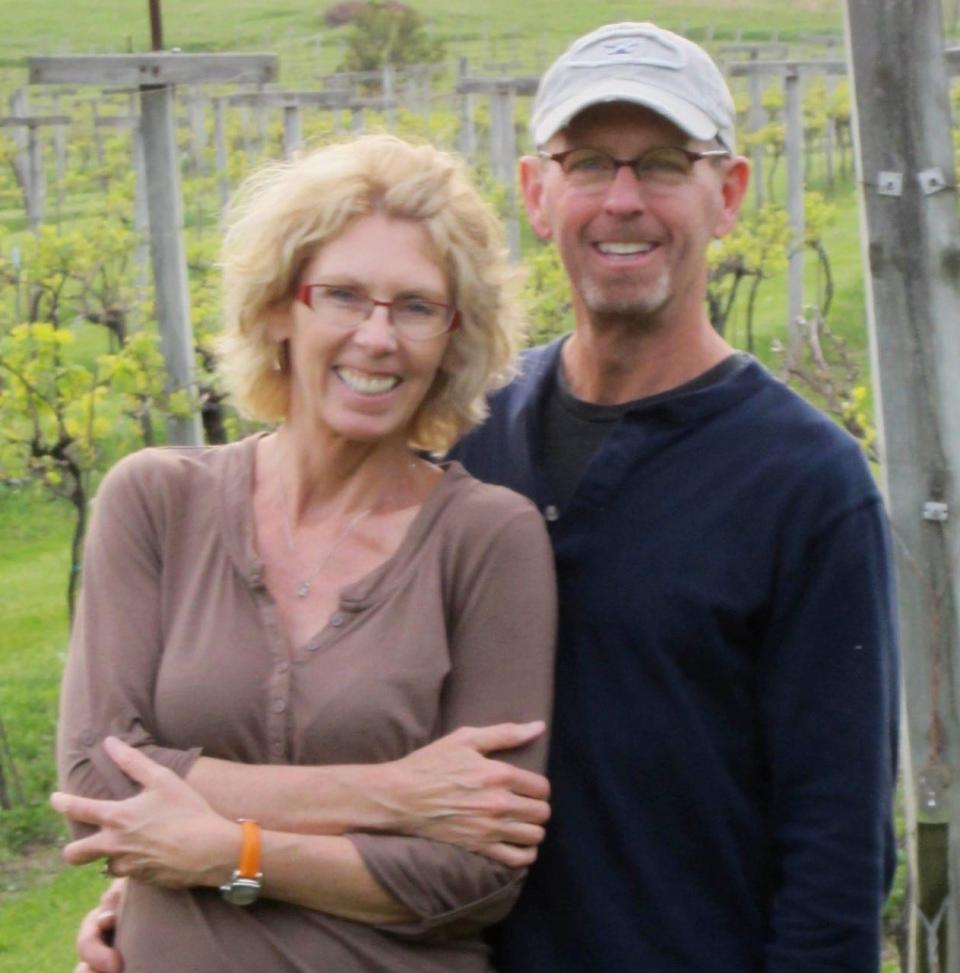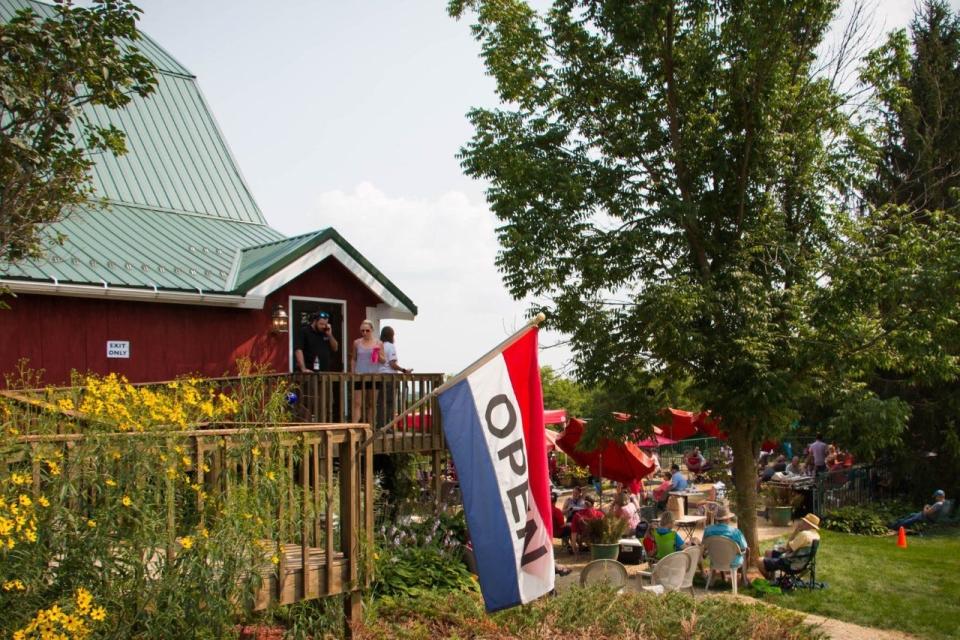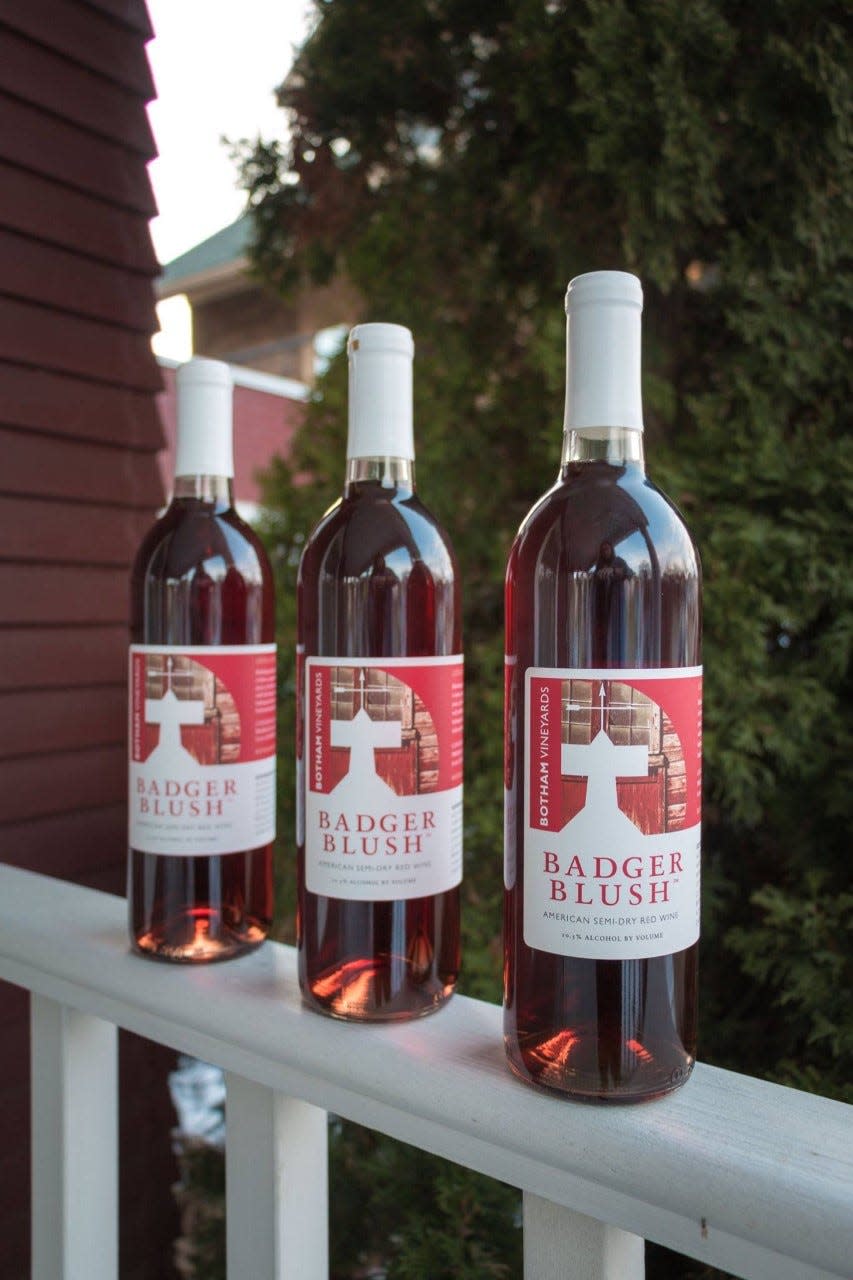On land that once was family farm, couple have been growing grapes and making wine for decades
Peter Botham grew up with his family farm in western Wisconsin. Agriculture was something he always knew, but he went off to graduate school with other plans.
Only later did he realize he couldn’t see himself in an office.
He went to work in wineries on the East Coast. There he found his fit. It was agriculture, yet different.
Tapping his family farm roots, he negotiated with his father for a piece of land and founded Botham Vineyards & Winery, 8180 Langberry Road, in Barneveld. He planted his first wine grapes in 1989, and in 1994 opened the renovated barn and tasting room.

More than three decades later, he still grows only two varietals, the same ones he originally planted on the property: Marechal Foch and Leon Millot.
Botham vine-to-bottle wines are distributed throughout the state, priced between $11 and $25. As of May their Badger Blush is also on tap at the UW-Madison Memorial Union Terrace. The tasting room has become a weekend destination, and Botham and his wife, Sarah, live at the property. They are typically on hand to meet visitors to the tasting room, which is now open Friday through Sunday. This year they’re also working on creating an event space for weddings.

It all begins with grapes
Peter: There were two primary plantings, Marechal Foch and Leon Millot, pretty commonly grown in cold climates. The primary reason being it ripens its fruits in a short season. The other is winter hardy. The important thing for both of those plantings is they make pretty nice wines. They’re both red grapes, and in good growing season they can make some excellent wine.
I tried some white varietals. They didn’t meet my standards as an agricultural product or wine product. I don’t think you can successfully grow white grapes here in Wisconsin. Of course, it depends on the wine you want to make. We don’t grow any white grapes. All ours is purchased as juice, most from the Finger Lakes area.
Sarah: We make everything here. We don’t use anything but grapes, no other fruit.
More: Kathleen Gallagher: What's standing in the way of growing Wisconsin's wine industry?
More: 10 places to get Wisconsin wine for relaxing fall evenings
Trends over time
Sarah: I think we see in our customers, when they experience Wisconsin wine or experience wine for the first time, tend toward the sweeter wines, but as they mature in their wine drinking, their palate tends to lean drier. Over time they move toward the drier wines. We see a lot of that, and so many of our customers are longtime customers.
Neatness and nature
Peter: The insect issue for us, we have basically eliminated, partly through sheer luck and partly through hard work. Sheer luck, our vineyard curiously enough is surrounded by 1,000 acres of nature conservancy. We have no row cropping anywhere near our vineyard.
What we do is practice really, really high hygiene in our vineyard. The grass is kept very short. Rows are kept clean. As a result, we have discovered what bugs you do get prefer it elsewhere, namely the nature conservancy, where there is tall grass and wet. We make it uncomfortable for the bugs.
By the numbers
Peter: When we first started out, back in 1994, I made maybe a couple thousand gallons. It was really tiny. Right before the recession we were making close to 30,000. Then in 2008 everything went into the toilet.
Sarah: Demand died.
Peter: We dropped back to about 15,000 gallons. Now it varies to some degree. We make between 10,000 and 15,000 gallons per year, depending on what comes out of the vineyard. We actually had one year of nothing.
Sarah: Our 30th anniversary in 2019.
Peter: There was no fruit. It was the result of a frost.
Defining vine to bottle
Peter: We as a company, with some of our wines, do everything. We grow the fruit, we harvest the fruit, we produce the wine, we put it in the bottle and we sell it. Right now there are three that are entirely vine to bottle wines.
Why it matters
Peter: There are many, many wineries that don’t grow fruit and don’t have vineyards associated with them. That is OK, just a different approach.
For us it has always been important that some of our products that we put out are entirely ours, vine to bottle Botham Vineyard products. Not only is it referencing we have done all the legwork for this, but it represents a sense of place. Those wines, the vine to bottle wines, you can pinpoint exactly where they came from, this part of southwest Wisconsin.
Sarah: Visitors can learn about and see where the wines are grown and how they’re made, experience them in the tasting room.
Wisconsin’s wine industry
Peter: It is very clear the wine industry in Wisconsin has changed dramatically. When I first started out, there were just a handful of us. … Now there are 130 or 140 wineries in Wisconsin. Some are serious professional endeavors, others are not so serious and not so professional. In some ways, I see the growth as a good thing for everybody … but at the same time there’s this giant hill that faces all of us convincing every customer there is value and quality in Wisconsin wines.
If you want to be a winemaker
Peter: You can learn fermentation science at a number of places. UW Madison even has a fermentation science major, though it is heavily tilted to beer. … Explore the wine industry, whether in Wisconsin or anywhere else, and get some experience. There really, really is no substitute. Go work at a winery. Winemaking is a skill, and it takes a lot of practice.
Favorite summer sip
Peter: I would say Vin 10 (a semi-dry white). It is made from a very obscure grape called Geisenheim. It is a French hybrid varietal, fruit I buy grown in the Finger Lakes region. It makes a spectacular wine, very crisp, very refreshing, exactly what you’re looking for in the summer. It has a lot of very distinctive citrus notes to it.
Sarah: I’m probably going to be with Peter on Vin 10, but you can’t go wrong with Badger Blush.

Wisconsin Wine Now on Tap
Sarah: Badger Blush is fun, refreshing, bright, with notes of black cherry, cranberry and raspberry all jumbled up in this lighthearted really approachable blush wine.
Peter: It is incredibly easy to drink.
Sarah: University of Wisconsin-Madison’s (Union) Terrace just picked it up. They have a kegerator, specific to wine.
Peter: What the university has done, most tap systems use CO2 as the pressure pusher. The problem with wine is it dissolves into the wine and you end up with fizzy wine.
You can set up a kegerator system using nitrogen instead. That does not dissolve into the wine. UW, they put in a nitrogen system. You can have Badger Blush right on tap! It was an interesting thing for me. I had to learn to keg wine.
Fork. Spoon. Life. explores the everyday relationship that local notables (within the food community and without) have with food. To suggest future personalities to profile, email psullivan@gannett.com.
Sign up for our Dish newsletter to get food and dining news delivered to your inbox.
Our subscribers make this reporting possible. Please consider supporting local journalism by subscribing to the Journal Sentinel at jsonline.com/deal.
DOWNLOAD THE APP: Get the latest news, sports and more
This article originally appeared on Milwaukee Journal Sentinel: Botham Vineyards & Winery, in Barneveld, takes wine 'vine to bottle'

